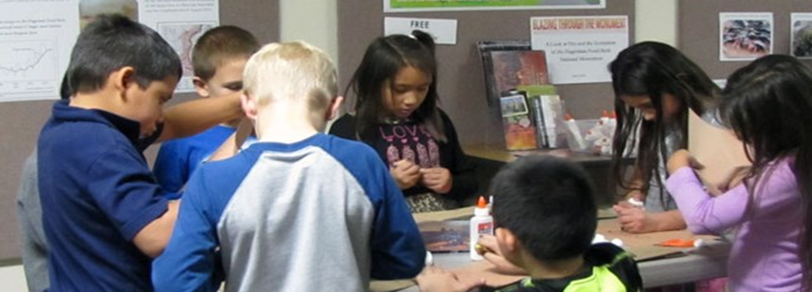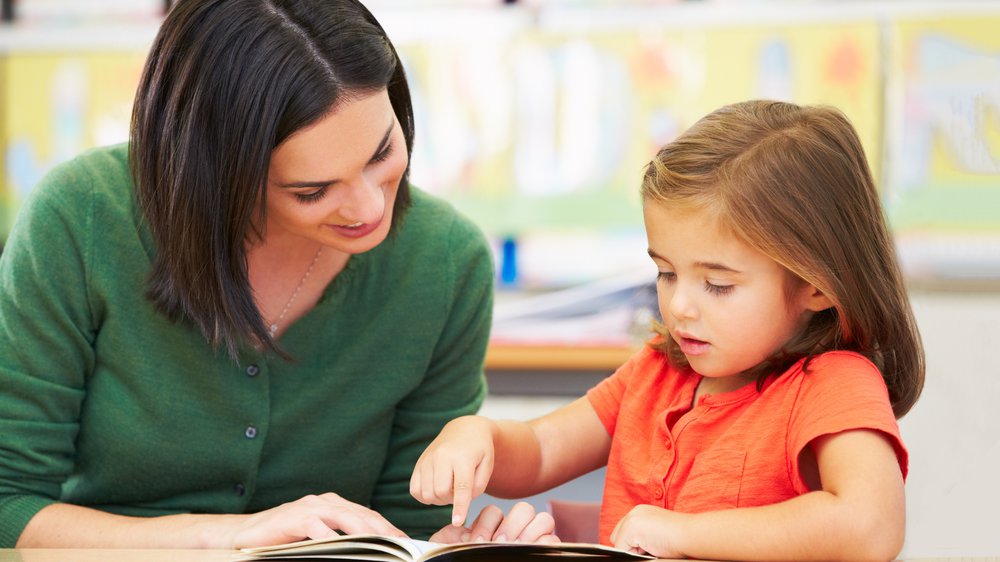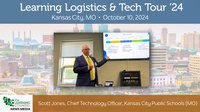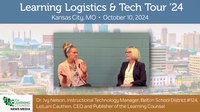The Infinite Monkey Theorem states that a monkey hitting keys at random on a typewriter for an infinite amount of time will almost surely be able to create the complete works of William Shakespeare. However, the probability that monkeys would be able to create one of Shakespeare's masterpieces is so tiny that the statistical chance of it occurring is almost zero. Put succinctly, all things are possible, but not all things are probable.
Taking the Infinite Monkey Theorem a bit further, although possible, it is highly improbable that one could create a machine that has a powerful neural network and deeply sophisticated algorithms to replace a good teacher. According to cognitive psychologist, Aldwyn Cooper, “Despite advances in artificial intelligence, humans will always have the edge over machines when it comes to teaching.”
“I’ve helped with more computers in more schools than anybody else in the world and I am absolutely convinced that is by no means the most important thing. The most important thing [to education] is a person. A person who incites your curiosity and feeds your curiosity; and machines cannot do that in the same way that people can.”
–Steve Jobs
1. Teaching is relational; not transactional
The most important gift a teacher has is the ability to see children for who they are, who they can be, and the relationship (not the transaction) between the two. Positive student interactions are an essential component of the learner experience and creating meaningful student relationships is also considered one of the most complex and challenging responsibilities of a teacher.
There are many nuances to relationships that robots will never replicate in their human interactions. Truly knowing someone is more than utilizing an algorithm to recall information. Students learn from teachers they like, which is an intimacy outside the grasp of current AI. Robotics and other forms of information communication can be used to enhance or speed up human correspondence; not establish and maintain meaningful associations.
Because the ability to build relationships is both key and difficult, being great at interpersonal experiences is requisite for being an effective teacher. If one can accept the idea that machines cannot create meaningful relationships, only enhance them, then it follows that machines cannot be great teachers.

2. Empathy & Trust
According to researchers at McGill University in Montreal, empathy matters. Their study noted that people who receive empathy from others, especially from an early age, develop a higher capacity to learn. Sometimes students, like adults, need care and attention. When a teacher stops, listens, and provides attention it is an investment in the relationship. Empathy has also been correlated with reducing the damaging effects of repeated stress, which also suggests that empathy has tremendous implications for achievement, both socially and intellectually.
In order for humans to thrive, we need to feel connected. When people commiserate over a similar or shared experience, it can create a powerful bond. If you tell a friend that you are sad, the friend will most likely show concern and empathize with your pain; robots cannot genuinely consider human feelings like a person can. If you were to share your sadness with a robot and it responded, "I am sorry for your loss, I can imagine you must be very upset" it would most likely not create a meaningful connection. Why? Because the robot does not have genuine emotions. There is no empathy, merely good programming.
3. Inspiration
One of the uniting aspects of the human experience is having an inspirational teacher. If you speak to a successful person they will often tell the story of the teacher that either incited them or inspired them to attain their current goals. Teaching is about inspiration, not information. Effective teaching focuses on the why and how, not the what, with the goal to spark imagination and to find a bridge to learners’ hearts and minds. Teachers are trained to inspire learners; inspiration cannot be programmed.
A computer may be able to motivate a student, but to really inspire takes a human being (If you need a concrete example, take a look at the rather unusual ‘inspirational’ posters and memes created by InspiroBot…).
To create the conditions where curiosity and passion ignite requires a gifted, human, teacher. Artificial intelligence may be able to replace some of the rote duties of a teacher; computers can provide information, they can calculate, project, and even be a facsimile for human interactions but ultimately, they cannot actually be human.
"Empathy is the heart of a great classroom culture"
-Bob Sornson

-
4. Transference
Machines do not perform well when confronted with new situations. Part of the reason is that computers cannot (yet) reliably transfer learning to a new situation as robots are designed to draw inferences based on pre-programmed possibilities. Personal experiences are unique to humans and cannot be transferred into machines. Human beings practice transference when we encounter something new or unique. As a basic example, if a person learns to play a video game using the WASD keys, the skills he/she develops will help him/her when they learn a new game, despite that it is different; we transfer our prior learning. Machines are not quite that sophisticated yet. Unlike humans, AI is unable to transfer it’s prior ‘learning’ into new situations. When an AI is given a “transfer test” where it is confronted with scenarios that differ from the examples used in training/coding, it cannot contextualize the situation and frequently cannot complete the task.
To see why modern AI is good at some things but ineffective at others, it helps to understand how deep learning works. Deep learning is, essentially, math: a statistical method where computers learn to classify patterns using neural networks. Deep learning employs an algorithm that adjusts the mathematical weights between nodes so that an input leads to the right output. It may appear that the machine is employing ‘reasoning’ but it is not; it is following a series of if-and-then statements. Many of the problems in human cognition aren’t classification problems.
To be an effective teacher it is essential to be able to adapt and apply learning in meaningful ways-ways that current neural networks and deep learning are unable to consistently reproduce. While machines can handle a variety of specific tasks, they haven’t yet come close to the intelligence needed to respond to ever-changing situations in modern classrooms.
5. It does not have to be an all-or-nothing proposition
A dichotomy is defined as a division or contrast between two things. Frequently, people frame decisions in education as dichotomies and as a result, limits possibilities. When we limit our conversation to “will AI replace teachers?” we have effectively ruled out all other options. Why not leverage the best from machines and the best from humans? The thinking is not to replace people with machines but rather, for robots to function as an aid in the classroom and value-add to the learner experience. Maybe both can live side-by-side, harmoniously and that partnership may enhance the experience in ways that using just one or the other would not allow.
AI and automated systems could have collaborative roles in the education system that would enable teachers and students to take advantage of the tech to benefit them both. We already employ computers to do a variety of things that make the classroom better like grading tests, keeping attendance records, and differentiating learning through adaptive systems. Chatbots and personalized teacher assistants are also examples where the technology is supporting the classroom. (Check out eLearning’s article Chatbots In Education for more info).
As a cautionary note, teachers should not be relegated to the role of overseers of the machines. They are leaders, coaches, guides, facilitators, and mentors. Whereas machines can motivate a learner through badges and game-based design, teachers encourage students when they struggle, and inspire them to set and reach for their goals. A computer can provide information, but a teacher can lend a hand, or an ear, and discern what each student needs to succeed. So, although it appears technology will play a critical role in the future of education, it will not supersede that of a human teacher.
Research included:
Cooper, A. (2017, October 2). Robot teachers won't replace us. Retrieved from Times Higher Education website: https://www.timeshighereducation.com/opinion/robot-teachers-wont-replace-us
Feiman-Nemser, S., & Rémillard, J. (1996). Perspectives on learning to teach. In F. B. Murray (Ed.), The Teacher Educator’s Handbook: building a knowledge base for the preparation of teachers (pp. 63–91). San Francisco, CA: Jossey-Bass.
For Every Child, Multiple Measures: What Parents and Educators Want From K-12 Assessments - NWEA. (2012). Retrieved from NWEA website: https://www.nwea.org/resources/every-child-multiple-measures-parents-edu...
Heick, T. (2018, February 12). Are schools prepared for great teachers? [Web log post]. Retrieved from https://www.teachthought.com/pedagogy/schools-prepared-great-teachers/
Houser, K. (2018, January 17). The solution to our education crisis might be AI. Retrieved from https://futurism.com/ai-teachers-education-crisis/
Jenkins, S., Williams, M., Moyer, J., George, M., & Foster, E. (2017). The Shifting Paradigm of Teaching: Personalized Learning According to Teachers. Retrieved from Knowledge Works website: http://www.knowledgeworks.org/sites/default/files/u1/teacher-conditions.pdf
Mertler, C. A. (2014). The data-driven classroom: How do I use student data to improve my instruction?
Morgan, B. (2017, August 16). 10 things robots can't do better than humans. Forbes. Retrieved from https://www.forbes.com/sites/blakemorgan/2017/08/16/10-things-robots-can...
Mubin, O., & Ahmad, M. (2016, November 15). Why teachers should not fear robots taking over their jobs. Newsweek. Retrieved from http://www.newsweek.com/robots-teachers-classroom-students-wall-e-educat...
Owen, L. (2015, November 11). Empathy in the Classroom: Why Should I Care? | Edutopia. Retrieved from https://www.edutopia.org/blog/empathy-classroom-why-should-i-care-lauren...
Pontin, J. (2018, February 2). GREEDY, BRITTLE, OPAQUE, AND SHALLOW: THE DOWNSIDES TO DEEP LEARNING. Wired. Retrieved from https://www.wired.com/story/greedy-brittle-opaque-and-shallow-the-downsi...
Townsend, J. C. (2013, June 6). Why We Should Teach Empathy To Improve Education (And Test Scores). Retrieved from https://www.forbes.com/sites/ashoka/2012/09/26/why-we-should-teach-empat...











